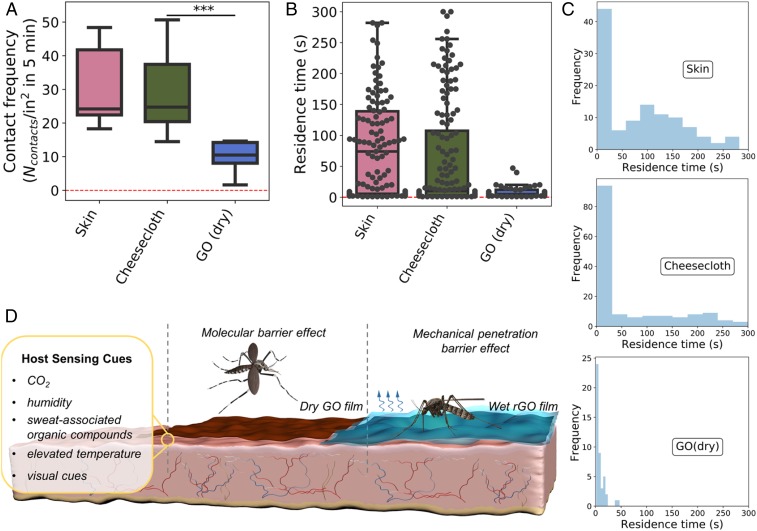Fig. 2.
Mosquito behavioral assays and mechanisms of bite inhibition. (A) Box plot of mosquito contact frequency (landings plus walk-ons) on dry GO films compared to controls. (B) Box plot of Aedes residence times after initial contact with dry GO films compared to controls. Black circles represent individual data points. (C) Residence time distributions (10 bins) of mosquitoes on skin, cheesecloth, and dry GO. (D) Sketch of possible bite inhibition mechanisms on dry GO and wet rGO films. (Left) A selection of chemical, thermal, and optical cues reported to play a role in mosquito host sensing (19, 20). Chemical cues (CO2, humidity, and sweat-associated organic compounds) are rendered nonbioavailable by a molecular barrier effect exerted by the overlaying (nonwetted) GO films (Center). Addition of water or sweat as an attractant on the outer surface of graphene (rGO) films successfully attracts mosquitos (Right), but still prevents biting through a mechanical penetration barrier effect (Fig. 3). Box plot interpretation is the same as in Fig. 1. Statistical significance was calculated using Welch’s t test (1-tailed test). ***P < 0.05. All of the graphene films were pressed onto skin with a layer of cheesecloth to prevent air gaps.

